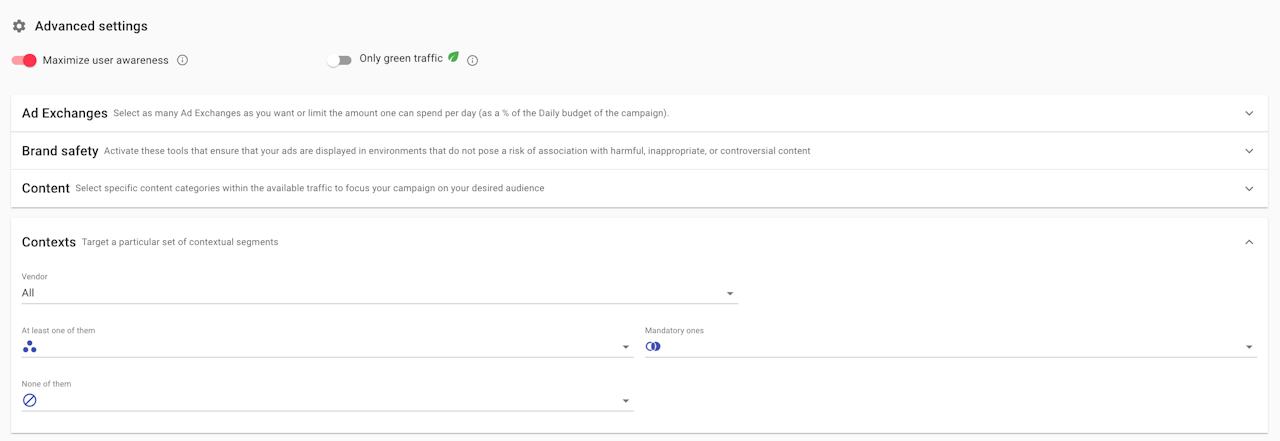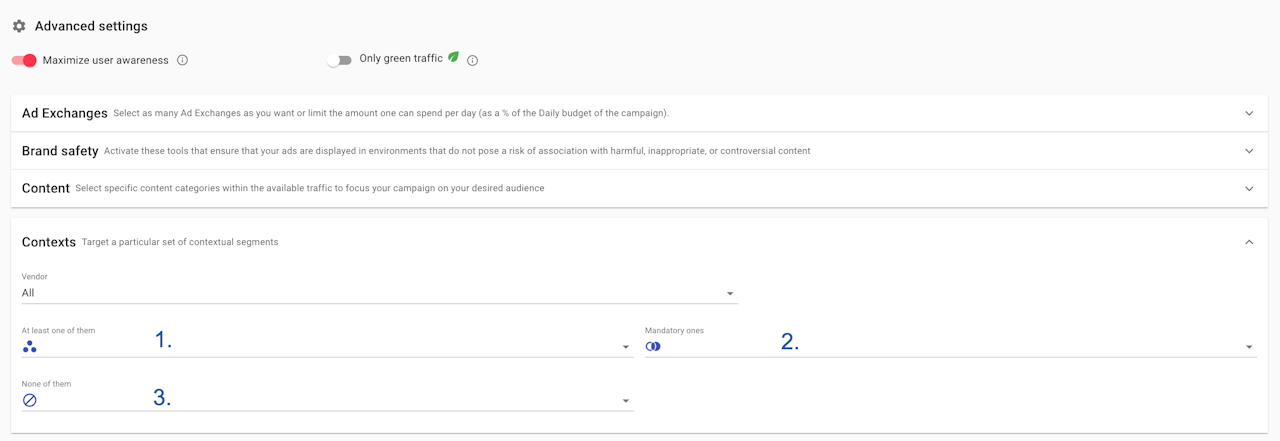






Overview
As native user IDs become less available, mediasmart helps advertisers preserve relevance through Audience Mapping and Contextual Targeting, ensuring smarter placements where it matters most.
Let’s take a closer look at context-based targeting.
You can target publisher categories, but with a twist: instead of relying on self-declared categories, we use classification powered by our context agent to determine the true nature of the content.
This targeting method is available for both Connected TV and Multichannel campaigns. You will be able to target pre-bid contexts from IAS.

Targeting rules
By using different targeting rules, we empower you to reach only the users you need:
You can select one or several contexts as "at least one of them" and that means that the campaign will only be served to users that are part of at least one of the contexts selected. They do not need to be part of all of them. This is the recommended option if you are targeting more than one context.
You can select one or several contexts as "mandatory ones" and that means that the campaign will only be served to users who are part of every single one of the contexts selected.
You can select one or several contexts as "none of them" and that means that the campaign is NOT going to be served to any user that is part of ANY of the contexts selected.

Select contexts
Use the field below the rule you want to use, and either scroll through the dropdown or type in the name of the context you want to target or block. Select the context and it will appear as a pill below the selected rule.

Precedence levels
If you target more than one context, we recommend you do it in "At least one of them", as it will include all of them, not the bid offers that have all of them.
From a precedence level, it will be the first one that will prevail. So, in the case depicted on the screenshot, 'Fitness enthusiasts' would go first before 'Martial Arts Enthusiasts'.

Blocking contexts
The easiest way to block contexts is to select them under 'None of them'. This tells the system not to deliver ads in those contexts.

Maximizing reach
If you are excluding or targeting several contexts, we recommend you place them in 'At Least one of them' instead of in 'Mandatory ones' to maximize reach.


